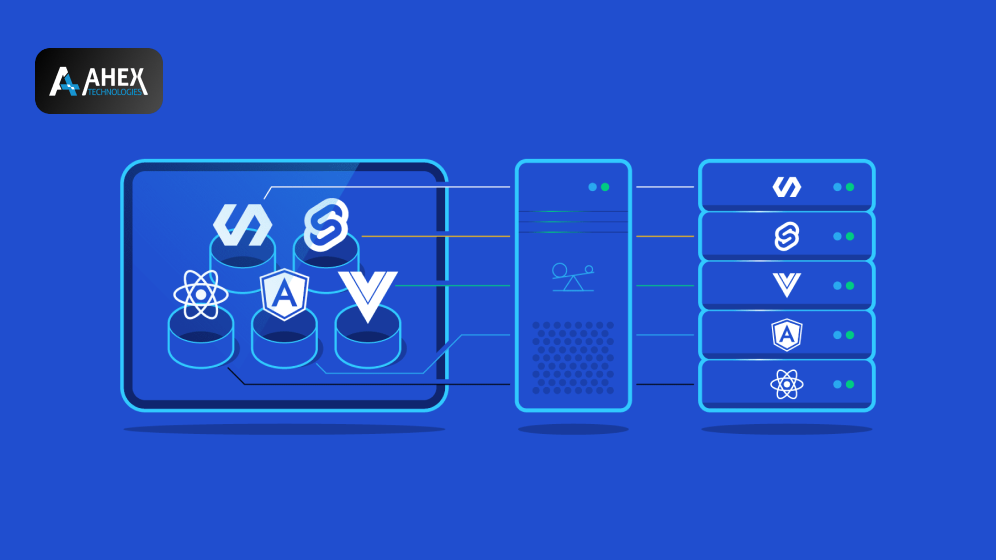
Web development has come a long way since the early days of the internet. The way we build and deploy web applications has changed dramatically, and one of the most significant changes has been the shift from monolithic architectures to microservices. This evolution has led to the rise of micro frontends, a new approach to building front-end applications. In this article, we will explore the journey of web development from monoliths to micro frontends.
Introduction
The term monolith refers to a large, complex software system that is built as a single, indivisible unit. In a monolithic architecture, all components of an application are tightly coupled, making it difficult to change and deploy new features. The microservices approach, on the other hand, involves breaking down an application into small, independent services that can be developed, deployed, and scaled independently.
The Rise of Microservices
Microservices have become popular in recent years due to their ability to address the limitations of monolithic architectures. With microservices, each service can be developed and deployed independently, which allows for more flexibility and faster iteration. This approach also enables teams to focus on specific areas of the application, leading to better collaboration and more efficient development.
Micro Frontends: A New Approach to Front-End Development
As the popularity of microservices has grown, so has the need for a similar approach in front-end development. Micro frontends are a new way of building front-end applications that follow the principles of microservices. Instead of building a monolithic front-end, micro frontends involve breaking down the front-end into smaller, independent components that can be developed and deployed independently.
Benefits of Micro Frontends
Micro frontends offer several benefits over traditional monolithic front-end architectures. One of the key advantages is increased flexibility. With micro frontends, developers can work on specific components without affecting the entire application. This allows for faster iteration and more efficient development.
Another benefit is improved collaboration. With micro frontends, multiple teams can work on different components of the application simultaneously, leading to better collaboration and more efficient development.
Challenges of Micro Frontends
While micro frontends offer many benefits, they also come with their own set of challenges. One of the main challenges is managing the complexity of multiple independent components. With micro frontends, it can be difficult to ensure that all components work together seamlessly. This requires careful planning and coordination among development teams.
Another challenge is maintaining consistency across different components. With micro frontends, each component may have its own style and layout, making it difficult to ensure consistency across the entire application.
Best Practices for Building Micro Frontends
To overcome the challenges of building micro frontends, there are several best practices that development teams can follow. One of the most important is to ensure that each component has a clearly defined responsibility. This helps to reduce complexity and makes it easier to manage each component.
Another best practice is to use a shared style guide and design system to ensure consistency across all components. This helps to create a cohesive user experience and reduces the risk of inconsistency.
Tools and Technologies for Building Micro Frontends
There are several tools and technologies available for building micro frontends. One of the most popular is React, a JavaScript library for building user interfaces. React makes it easy to build reusable UI components that can be used across different applications.
Another popular technology is Web Components, a set of web APIs that allow for the creation of reusable custom elements. Web Components provide a way to build independent components that can be used across different applications and frameworks.
Conclusion
The shift from monolithic architectures to microservices has revolutionized the way we build and deploy web applications. The rise of micro frontends is a natural extension of this evolution, allowing for more flexibility and efficient development in front-end development. While there are challenges to building micro frontends, following best practices and using the right tools and technologies can help overcome these obstacles.
As web development services continues to evolve, Web development is likely that we will see even more changes and innovations in the future. However, by understanding the journey from monoliths to micro frontends, developers can stay ahead of the curve and build better, more efficient web applications.
FAQS
A monolithic architecture refers to a large, complex software system that is built as a single, indivisible unit.
Microservices are an approach to building software applications by breaking them down into small, independent services that can be developed, deployed, and scaled independently.
Micro frontends are a new way of building front-end applications that follow the principles of microservices. Instead of building a monolithic front-end, micro frontends involve breaking down the front-end into smaller, independent components that can be developed and deployed independently.
Micro frontends offer several benefits over traditional monolithic front-end architectures, including increased flexibility, improved collaboration, and more efficient development.
The main challenges of building micro frontends include managing the complexity of multiple independent components and maintaining consistency across different components. However, following best practices and using the right tools and technologies can help overcome these challenges.







